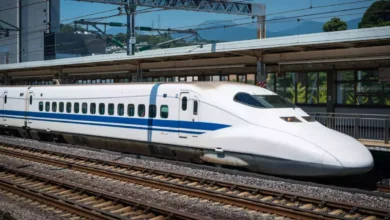Billions of Indians using digital structures making it the first country to develop all 3 DPIs
India, through India Stack, became the first country to develop all three foundational DPIs (Digital Public Structure), Digital identity (Aadhar), Real-time fast payment (UPI), and Account Aggregator built on the Data Empowerment Protection Architecture (DEPA).

Public infrastructure is a cornerstone of human progress. With this progress comes different foundational modes of public structure. In G20, the most pertinently spoken of public structure od called DPIs (Digital Public Infrastructure).
Finance Minister, Nirmala Sitharaman took to the ‘X’ platform stating, “India’s G20 Presidency has brought Digital Public Infrastructure (DPI) agenda to the table. Members acknowledged the significant role of DPI in rapidly advancing financial inclusion & productivity gains, thereby transforming the lives of the poor in the country. DPI agenda has had great recognition for the achievements in the scaling up that happened in India.”
India’s call for global cooperation and equitable growth for all, as well as its display of transformative digitisation, have resonated with the world, according to Union Minister Rajeev Chandrasekhar, who expressed confidence that India’s G20 presidency underpins strong messages that will leave an indelible mark. In an interview with PTI ahead of the G20 Leaders’ Summit set for September 9-10 in New Delhi, Chandrasekhar described India’s Digital Public Infrastructure (DPI) as a force whose time has come, adding that nothing can stop it.
Digital Public infrastructure (DPI)
Digital public infrastructure (DPI) refers to building blocks or platforms such as digital identity, financial infrastructure, and data exchange solutions that assist governments in providing important services to their residents, empowering individuals, and improving lives through digital inclusion.
DPIs act as a conduit for people, money, and information. First, the movement of individuals through a digital ID system. Second, money flows through a real-time quick payment mechanism. Third, the flow of personal information through a consent-based data-sharing mechanism to realize the benefits of DPIs and empower citizens with true data control.
India, through India Stack, became the first country to develop all three foundational DPIs, Digital identity (Aadhar), Real-time fast payment (UPI), and Account Aggregator built on the Data Empowerment Protection Architecture (DEPA).
So what are the pillars of India’s DPI?
- Aadhar: Aadhar is a strategic policy instrument for fostering social and financial inclusion, public sector delivery reforms, fiscal budget management, ease, and hassle-free people-centric governance. Aadhaar holders may use their Aadhaar for private sector activities willingly, and private sector firms are not required to obtain specific approval for such use.
- DigiYatra: DigiYatra is a Facial Recognition System (FRS)–based Biometric Enabled Seamless Travel (BEST) experience. In the fiscal year 2022, aviation passenger traffic in India was anticipated to reach over 188 million in airports across the country, with over 22 million being foreign travelers.
- Digilocker: DigiLocker has 150 million users, six billion stored documents, and done with a tiny budget of RS 50 crore over seven years. The users can store their documents such as insurance, medical reports, PAN card, passport, marriage certificate, school certificate and other documents in the digital format.
- UPI (Unified Payment Interface): UPI (Unified Payment Interface) now handles over eight billion transactions each month, with a monthly value of USD 180 billion, or almost 65% of India’s GDP. UPI is now the most popular of the National Payments Corporation of India (NPCI)-operated systems, which include the National Automated Clearing House (NACH), Immediate Payment Service (IMPS), Aadhaar-enabled Payment System (AePS), Bharat Bill Payment System (BBPS), RuPay, and others.
What is India Stack?
IndiaStack is a set of APIs (Application programming interface) that allows governments, businesses, startups and developers to utilize a unique digital Infrastructure to solve India’s hard problems towards presence-less, paperless, and cashless service delivery.
It aims to unlock the economic primitives of identity, data, and payments at population scale.
The vision of India Stack is not limited to one country; it can be applied to any nation, be it a developed one or an emerging one.
This project was conceptualized and first implemented in India, where its rapid adoption by billions of individuals and businesses has helped promote financial and social inclusion and positioned the country for the Internet Age.
Please, also have a look into : G20: India’s digital public infra has impact that goes beyond financial inclusion World Bank says



